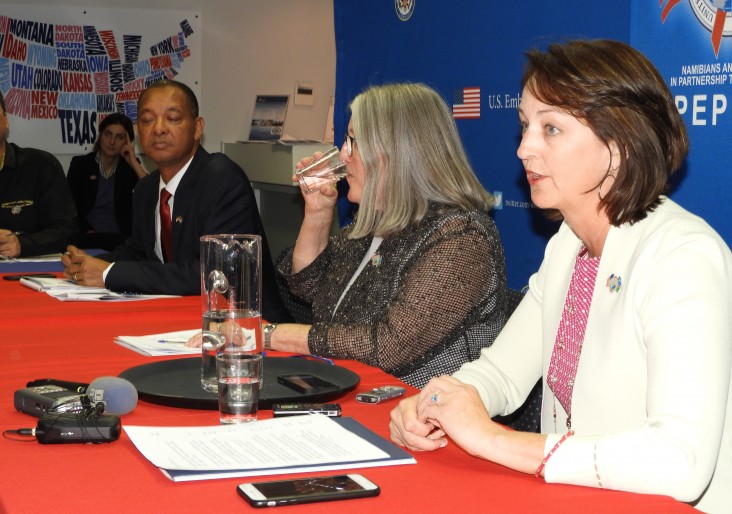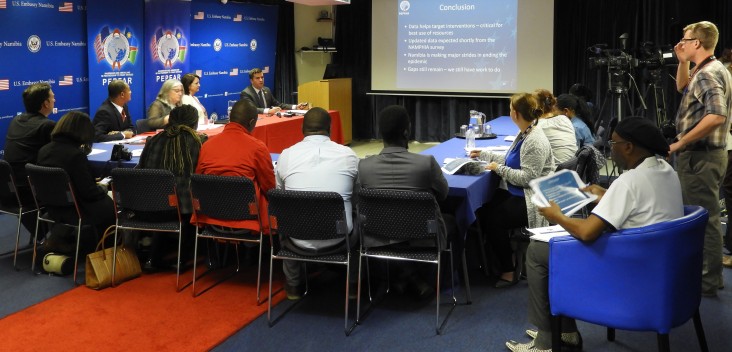Speeches Shim

Our purpose today is to provide our media partners with information to enhance your understanding of the HIV/AIDS epidemic in Namibia and the efforts underway to address it. PEPFAR is the U.S. government’s response to the global HIV/AIDS epidemic. The program is the largest commitment in history by any nation to address a single disease.
PEPFAR was launched in 2003, and introduced here in Namibia one year later, in 2004, in partnership with the Government of the Republic of Namibia (GRN).
PEPFAR Namibia works very closely with the Ministry of Health and Social Services, and aligns all of its activities with Namibia’s National Strategic Framework for HIV.
PEPFAR also works in close collaboration with the Ministries of Education and Gender, as well as with civil society organizations, the private sector, and other donors: UNAIDS, WHO, and the Global Fund.
For the next annual funding cycle starting in October, PEPFAR will provide Namibia with USD 73.6 million, which is equivalent to nearly N$1 billion. This is a slight increase over current year funding of USD 72.3 million. The Namibian government has made great strides in the fight against HIV and continues to explore various ways of tackling the epidemic.
PEPFAR supports Namibia in three strategic areas:
(1) prevention of HIV transmission,
(2) care and treatment of people living with HIV,
(3) strengthening the public health system to effectively and sustainably respond to the epidemic.
One part of the overall strategy is ensuring that the Namibian people have access to accurate and timely health information. That is why you, the media, play a very important role in this partnership.
At today’s session, our experts will provide you with detailed information about our programs and activities, results that we have achieved, new areas of focus, and ongoing challenges.
PEPFAR Namibia remains committed to working with the Namibian government to achieve the UNAIDS 90-90-90 targets, which means ensuring that 90% of all people living with HIV know their status, that 90% of people diagnosed with HIV are on ART, and that 90% of those on treatment achieve a suppressed viral load. This last 90 is the most important in terms of maintaining the health of infected individuals and stopping HIV transmission.
With that brief overview, I will hand off to our experts from the U.S. Centers for Disease Control and Prevention (CDC) and the U.S. Agency for International Development (USAID).
Thank you for your attendance, and we will welcome any questions or comments you might have at the end of the presentations.


Comment
Make a general inquiry or suggest an improvement.